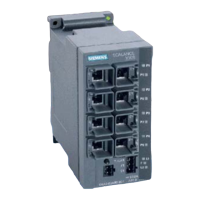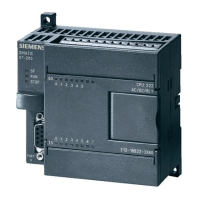Product Overview
1.3 Features of the Text Display (TD) Devices
Text Display (TD) User Manual
16 System Manual, 08/2008, A5E00765548-03
1.3 Features of the Text Display (TD) Devices
Features of the Text Display (TD) Devices
You can use your TD device to perform the following tasks:
● Viewing a hierarchy of user menus and screens that allow an operator to interact with the
application or process
You create these user menus and screens with the Text Display wizard of
STEP 7-Micro/WIN
● Displaying alarms (bit-enabled messages) that are generated by the S7-200 CPU
You define these alarms with the Text Display wizard of STEP 7-Micro/WIN
● Modifying designated program variables
The TD device allows you to define a variable as either a text string or a numeric string:
– Text string: All characters in a variable are editable
– Numeric string: Only the numeric characters are editable (the cursor skips over all
non-numeric characters)
The TD device allows you to define a variable as a word, double word, or real
● Forcing or unforcing I/O points: You can force individual I/O points in the S7-200 CPU to
be on or off (TD 200C, TD 200, and TD400C only)
● Setting the time and date (if the S7-200 CPU supports a real-time clock)
● Viewing the CPU status (including version information)
The TD 200C and TD400C provide additional functionality for interacting with the S7-200
CPU:
● You can change the operating mode (RUN or STOP) of the S7-200 CPU
● You can load the user program in the S7-200 CPU to a memory cartridge
● You can access and edit the data stored in the memory of the S7-200 CPU
International Languages and Characters Support
The TD 200C and TD 200 devices provide a default TD character set which supports bar
graph characters. The TD devices (as noted) support the following Windows character sets
for displaying messages:
● Arabic
● Baltic
● Chinese (Simplified Chinese)1
● Cyrillic
● Greek
● Hebrew
● Latin 1 (with Boldface)

